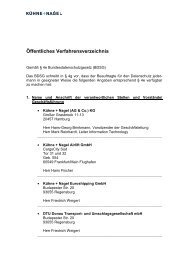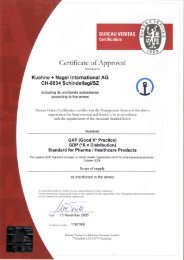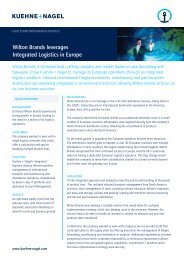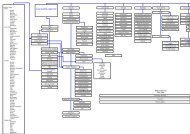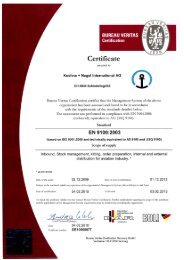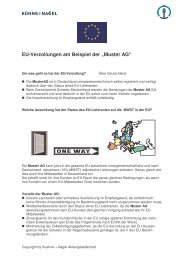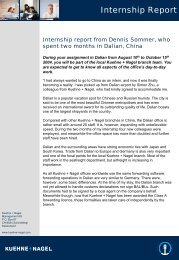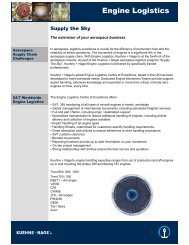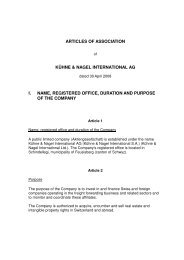You also want an ePaper? Increase the reach of your titles
YUMPU automatically turns print PDFs into web optimized ePapers that Google loves.
24 Markets & Products<br />
Gas turbines to the Urals:<br />
“Mission acco<br />
A year and a half of preparations<br />
for a journey through the<br />
heart of Russia: Relying on their<br />
know-how, <strong>Kuehne</strong> + <strong>Nagel</strong>'s<br />
project logistics experts safely<br />
moved a giant gas turbine with<br />
all its accessories from Sweden<br />
to the Urals.<br />
The destination of the heavy lift was<br />
Glazov, a town more than a thousand<br />
kilometres to the east of Moscow in the<br />
Republic of Udmurtia, a part of the<br />
Russian Federation.<br />
On such out-of-the-way routes, every<br />
detail of a transport operation must be<br />
minutely planned. That is why the <strong>Kuehne</strong><br />
+ <strong>Nagel</strong> team already began the first<br />
on-the-spot surveys in the spring of<br />
2004 – eighteen months before the<br />
transport was due to take place. It was<br />
planned to carry the turbine by ship<br />
from Sweden across the Baltic and via<br />
Russian inland waterways to Perm, the<br />
river port nearest to the Urals. This was<br />
a logical choice, for Perm is located on<br />
the Kama river, a tributary of the Volga.<br />
From there the load was to be moved<br />
overland by heavy load transporters to<br />
Glazov.<br />
But that was easier said than done. The<br />
many inspections of the roads between<br />
Perm and Glazov had confirmed that a<br />
large part of the cargo could be shipped<br />
to the port and carried on from there without<br />
serious problems. But the challenge<br />
was getting the heavy items across<br />
the Kama river. The 300 metre-long<br />
bridge would almost certainly have collapsed<br />
under the enormous weight of<br />
the gas turbine, the generator and the<br />
transport vehicles. There was no way the<br />
bridge could be reinforced. So what was<br />
to be done? The solution was to transfer<br />
the units onto a pontoon barge – a floating<br />
platform – which was pulled by a tug<br />
boat to a point further up the Kama river<br />
where a landing place to roll the<br />
vehicles with the heavy components off<br />
the barge via a ramp was prepared. For<br />
the landing operation the team needed<br />
a location with a sufficient depth of<br />
water and firm river banks. In order to<br />
achieve the required depth it was necessary<br />
to dredge the river. This was preceded<br />
by a thorough survey of the river<br />
<strong>Kuehne</strong> + <strong>Nagel</strong> World No. 1/2006





